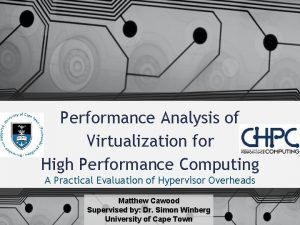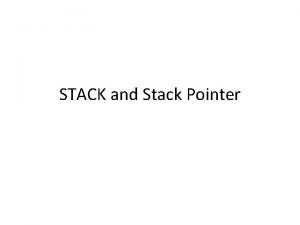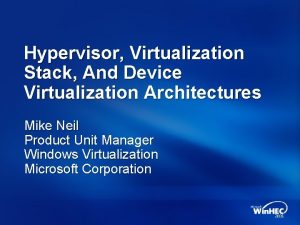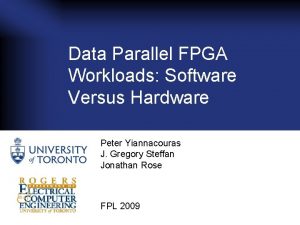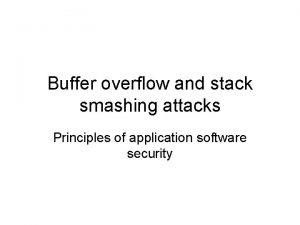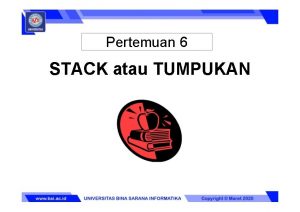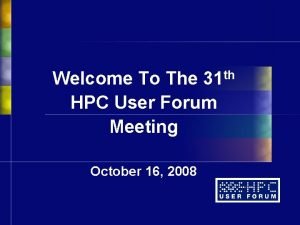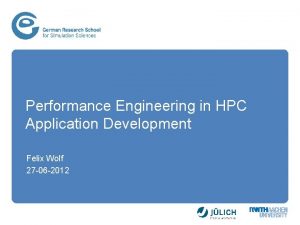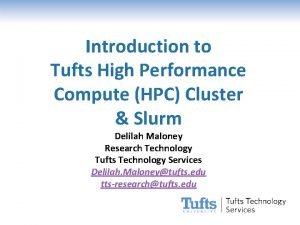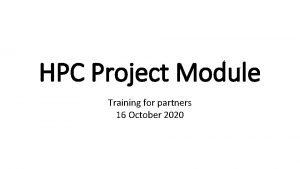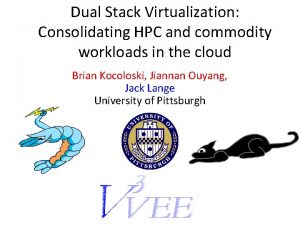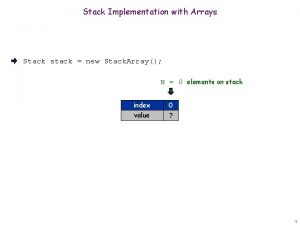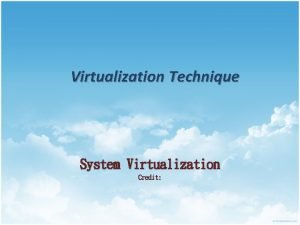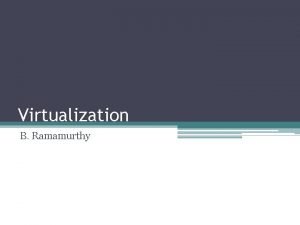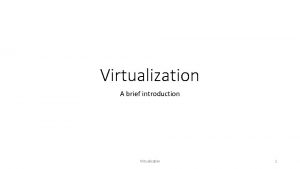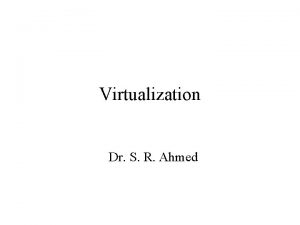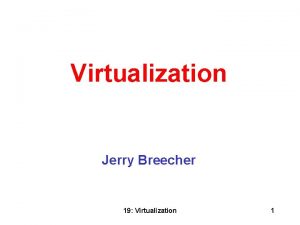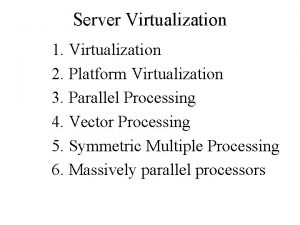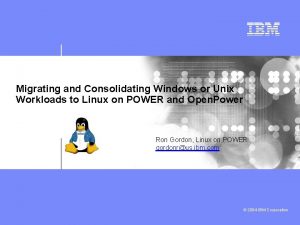Dual Stack Virtualization Consolidating HPC and commodity workloads















- Slides: 15

Dual Stack Virtualization: Consolidating HPC and commodity workloads in the cloud Brian Kocoloski, Jiannan Ouyang, Jack Lange University of Pittsburgh

Summary • Cloud computing holds great promise for HPC – Significant interest in scientific computing community • Problem: HPC applications need HPC environments – Tightly coupled, massively parallel, and synchronized – Current services must provide dedicated HPC clouds • Can we host HPC applications in a commodity cloud? • Dual Stack Approach – Provision the underlying software stack along with HPC job – Commodity VMM should handle commodity applications – HPC VMM (Palacios) can provide HPC environment

HPC in the cloud • Clouds are starting to look like supercomputers… – Are we seeing a convergence? • Not yet – – Noise issues Poor isolation Resource contention Lack of control over topology • Very bad for tightly coupled parallel apps – Require specialized environments that solve these problems • Approaching convergence – Vision: Dynamically partition cloud resources into HPC and commodity zones – This talk: partitioning compute nodes with performance isolation

User Space Partitioning Memory Socket 1 Socket 2 Cores 1 2 5 6 3 4 7 8 Commodity Partition Memory HPC Partition • Current cloud systems do support this, but… • Interference still exists inside the OS – Inherent feature of commodity systems

HPC vs. Commodity Systems • Commodity systems have fundamentally different focus than HPC systems – Amdahl’s vs. Gustafson’s laws – Commodity: Optimized for common case • HPC: Common case is not good enough – At large (tightly coupled) scales, percentiles lose meaning – Collective operations must wait for slowest node – 1% of nodes can make 99% suffer – HPC systems must optimize outliers (worst case)

Commodity VMMs • Virtualization is considered an “enterprise” technology – Designed for commodity environments – Fundamentally different, but not wrong! • Example: KVM architecture issues – Userspace handlers – Fairly complex memory management – Locking and periodic optimizations – Presence of system noise

Palacios VMM • OS-independent embeddable virtual machine monitor – Established compatibility with Linux, Kitten, and Minix • Specifically targets HPC applications and environments – Consistent performance with very low variance • Deployable on supercomputers, clusters (Infiniband/Ethernet), and servers – 0 -3% overhead at large scales (thousands of nodes) • VEE 2011, IPDPS 2010, ROSS 2011 Open source and freely available http: //www. v 3 vee. org/palacios 7

Palacios/Linux • Palacios/Linux provides lightweight and high performance virtualized environments – Internally manages dedicated resources • Memory and CPU scheduling – Does not bother with “enterprise features” • Page sharing/merging, swapping, overcommitting resources • Palacios enables scalable HPC performance on commodity platforms

VMM Comparison • Primary difference: Consistency – Requirement for tightly coupled performance at large scale • Example: KVM nested paging architecture – Maintains free page caches to optimize performance • Requires cache management – Shares page tables to optimize memory usage • Requires synchronization VMM % of exits Mean Std Dev # NPFS KVM 52% 8804 5232 3, 265, 156 Palacios 50% 10876 2685 1, 872, 017

Dual Stack Architecture • Partitioning at the OS level Commodity Application(s) HPC Application Commodity OS HPC OS KVM Linux Kernel Palacios VMM Linux Module Interface Palacios Resource Managers Hardware • Enable cloud to host both commodity and HPC apps – Each zone optimized for the target applications

Evaluation • Goal: Measure VM isolation properties • Partitioned a single node into HPC and commodity zones – Commodity Zone: Parallel Kernel compilation – HPC Zone: Set of standard HPC benchmarks – System: • Dual 6 -core AMD Opteron with NUMA topology • Linux guest environments (HPC and commodity) • Important: Local node only – Does not promise good performance at scale – But, poor performance will magnify at large scales

Results Commodity VMMs degrade with contention Palacios delivers consistent performance Mini. FE: Unstructured implicit finite element solver Mantevo Project -- https: //software. sandia. gov/mantevo/index. html

Discussion • A dual stack approach can provide HPC environments in commodity systems – HPC and commodity workloads can dynamically share resources – HPC requirements can be met without fully dedicated resources • Networking is still an open issue – Need mechanisms for isolation and partitioning – Need high performance networking architectures • 1 Gbit is not good enough • 10 Gbit is good, Infiniband is better – Need control over placement and topologies

Conclusion • The cloud model is transformative for HPC workloads – But only if it can meet the demands of HPC users • Cloud services need to explicitly support HPC workloads – Different requirements and behaviors than commodity applications • A partitioned dual stack approach can get us there – Dynamically configured cloud infrastructures for multiple application classes

Thank you • Jack Lange – jacklange@cs. pitt. edu – http: //www. cs. pitt. edu/~jacklange • Palacios – http: //www. v 3 vee. org/palacios
 Uct hpc
Uct hpc Characteristics of stack
Characteristics of stack Virtualization stack
Virtualization stack Big data workloads
Big data workloads Composable infrastructure definition
Composable infrastructure definition Vector processing workloads
Vector processing workloads Stack smashing
Stack smashing Instruksi yang diberikan untuk menghapus data stack adalah
Instruksi yang diberikan untuk menghapus data stack adalah Syngenta corn herbicides
Syngenta corn herbicides Hpc user forum
Hpc user forum Hpc challenge benchmark
Hpc challenge benchmark Hpc application development
Hpc application development Paediatric history taking
Paediatric history taking Mem8000
Mem8000 Hrp project module
Hrp project module Azure hpc cache
Azure hpc cache
